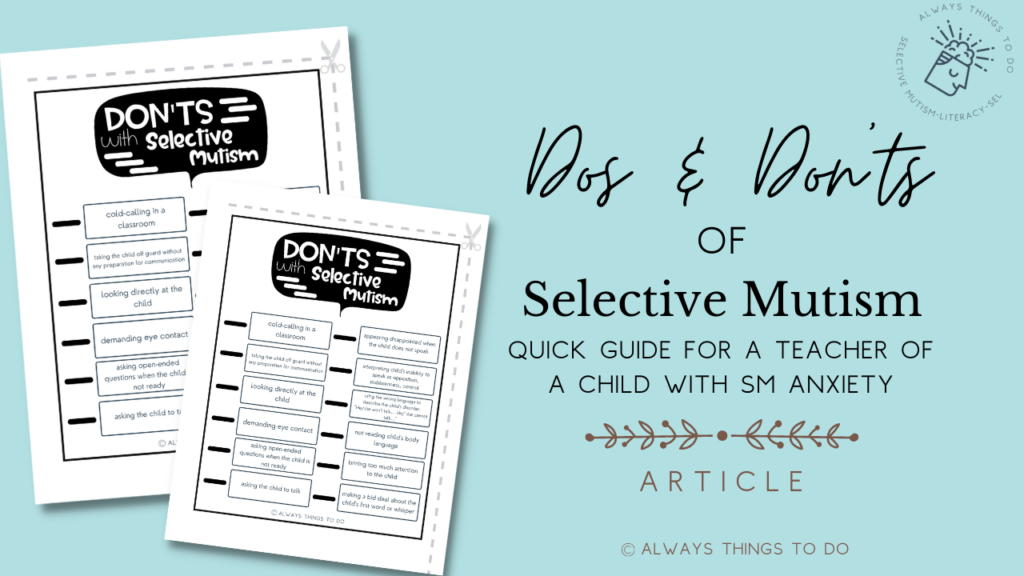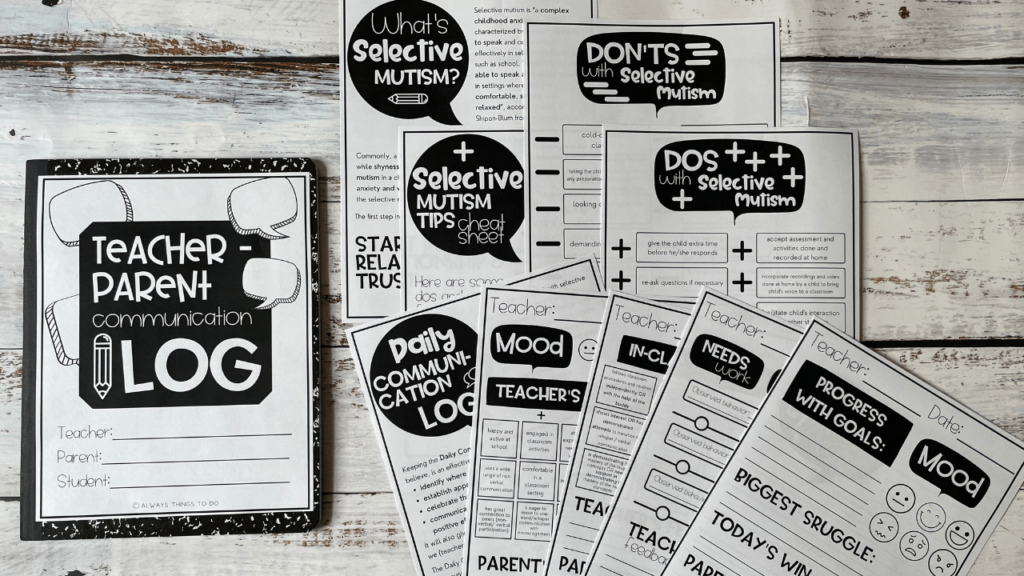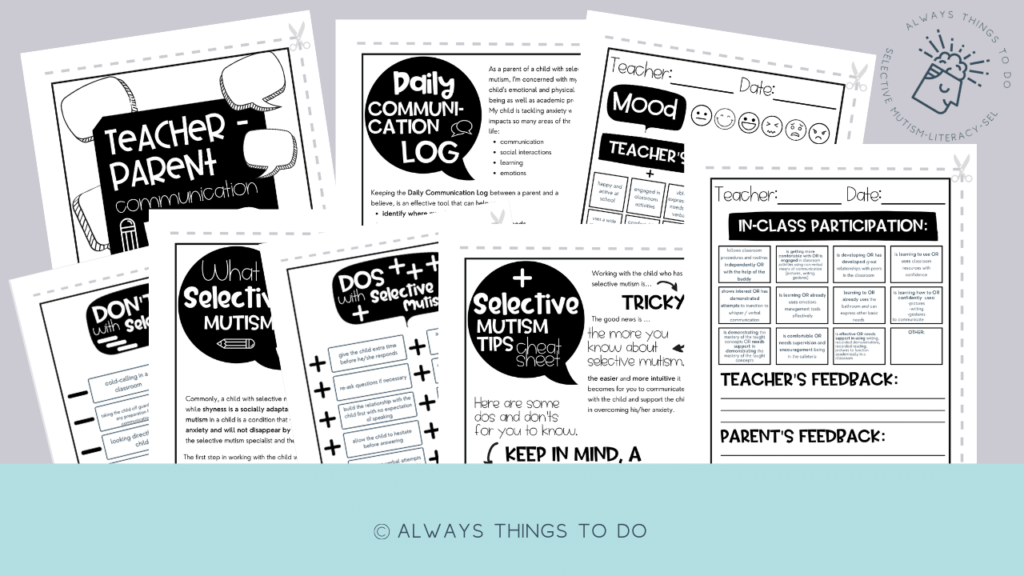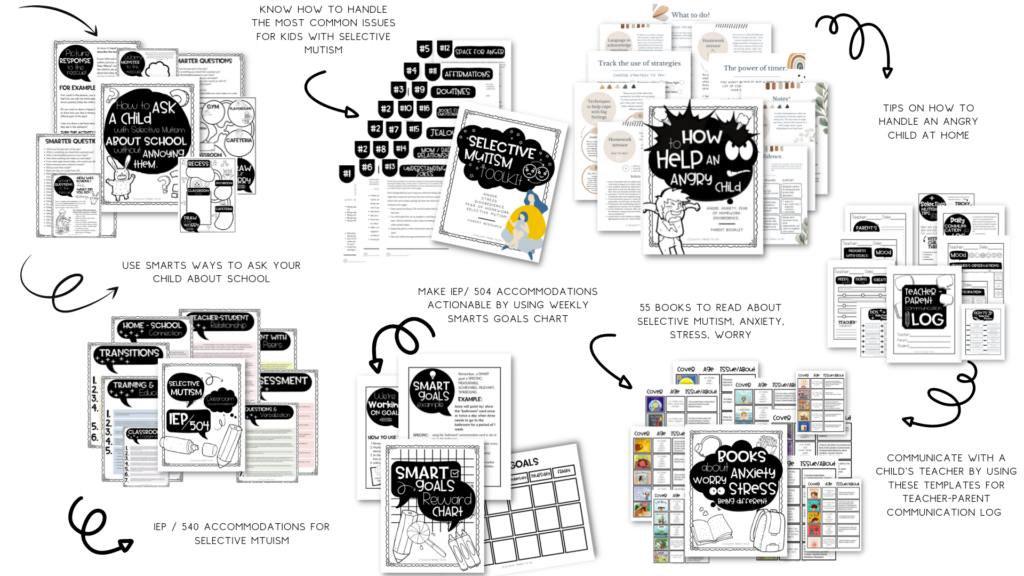Selective Mutism Dos And Don’ts: Easy Guide for a Classroom.

This post will give you easy-to-follow guidelines about dos and don’ts of selective mutism in a classroom.
I’ve been a parent of a child with selective mutism for quite a while. Tackling the behaviors prompted by anxiety daily is a matter of applying tricks and procedures we, as a family, worked out to handle the moments of big emotions, occasional screaming and hitting, meltdowns, school work and homework issues, siblings troubles and many more.
The rule of thumb in figuring out selective mutism anxiety disorder dos and don’ts is to:
- Track your child’s behavior patterns
- Notice emotional triggers (What leads to meltdowns?)
- Observe what environment triggers sensory overload
- Figure out major sources of issues at school (Why is the child struggling in academics?)
Because selective mutism anxiety is so unique in its manifestation in children, there is no 100% match of child’s behavior or struggles that are true for all children with selective mutism. For example, some children with selective mutism anxiety disorder excel in academics, others struggle a lot. Some kids are very responsive to interventions in school, other digress and experience even more anxiety. Some kids have a very hard time with toilet, others can use signals and picture cards effectively.
All in all, when determining dos and don’ts for a child with selective mutism and how these guidelines can be applied in a classroom a lot will depend on:
- The level of child’s anxiety,
- How well a child responds to interventions and treatment,
- Does the child have other conditions that need to be treated alongside with selective mutism?
Even though in the situation with selective mutism in a classroom, there is no one size fits all solution, certain things are quite obvious and standard; therefore, can be applied by any teacher who has a child with selective mutism anxiety disorder.
Below, you will read selective mutism anxiety disorder dos and don’ts that can be used in the classroom.
Selective Mutism Dos and Don’ts.

Selective mutism anxiety disorder dos:
- give the child extra time before he/she responds
- re-ask questions if necessary
- build the relationship with the child first with no expectation of speaking
- allow the child to hesitate before answering
- embrace non-verbal attempts from a child to communicate
- bring child’s anxiety to lower levels by engaging with the child in activities and building rapport
- accept assessment and activities done and recorded at home
- incorporate recordings and video done at home by a child to bring child’s voice to a classroom
- facilitate child’s interaction with other students
- showcase a child’s work that does not require speaking (pictures, projects, etc.)
- incorporate a commentary style of talking at the very first stages of communicating with the child
- expect transition to the first sound and word to be a long process
Selective Mutism anxiety disorder don’ts:
- cold-calling in a classroom
- taking the child off guard without any preparation for communication
- looking directly at the child
- demanding eye contact
- asking open-ended questions when the child is not ready
- asking the child to talk
- appearing disappointed when the child does not speak
- interpreting child’s inability to speak as opposition, stubbornness, control
- using the wrong language to describe the child’s disorder: “He/she won’t talk… He/ she cannot talk…”
- not reading child’s body language
- brining too much attention to the child
- making a bid deal about the child’s first word or whisper
Sharing these dos and don’t with a teacher is a great way to provide quick orientation of how to deal with a child with anxiety such a selective mutism.
I should note that each individual idea in the lists of dos and don’ts probably require its own better explanation and understanding, but the bottom line is if the teacher is ready to look at the list and follow the general guidelines, it will be a great step toward creating a better environment for a child with selective mutism, especially at the beginning of the school year.
If you like the ideas and the resource, check out this made-for-you “Teacher-Parent Communication Log” which already has created printable sheets for dos and don’ts. “Teacher-Parent Communication Log” will allow to:

- Have a continuous communication with your child’s teacher over the school year
- Provide the teacher with quick information about selective mutism
- Communicate with a teacher using ready-to-go templates
- For a teacher, to be specific in their observations and comments about the child
- Share concerns about new or problematic behaviors and struggles
- Have a record of communication that can be used for further IEP meetings, etc.
Check out this VIDEO EXPLANATION of the resource.
“Teacher-Parent Communication Log” is one of an amazing resources designed for a parent of a child with selective mutism anxiety disorder, and it is part of – “Selective Mutism Home-School Parent Toolkit.”

The toolkit ($27) has 7 resources:
- 53 Selective mutism IEP/ 504 accommodations
- 5 Made-for-you teacher-parent daily (weekly) communication log templates (designed for selective mutism)
- Smart (verbal/ non verbal) goals/ reward chart and explanation
- 15 Most common issues of children with selective mutism and how to address them
- How to help an angry child ideas and tips (tantrums, homework issues, and more)
- 50 Interesting questions to ask a child about school without annoying them + ways for your child to respond with pictures
- 55 Suggestions of books about worry, anxiety, stress, selective mutism for your child’s teacher, and home reading
You can explore the TOOLKIT here.
If you like this post, you may find other post educational and helpful. My recommendations on the topic are:
- Helping a Child With Selective Mutism Through Big Emotions: Mom/Parent-Child Relationship, Resentment, Anger, and Detachment.
- Selective Mutism Tantrums: How to Deal With a Ball of Anger After School.
Other recommendations:
- 7 Must-Do Things For A Parent of A Child With Selective Mutism: Actionable Tips and Resources to Consider.
- 6 Things You Can Do Right Now To Help Your Child With Selective Mutism.
- “What Is Selective Mutism?”
- “Selective Mutism: How To Beat Crisis, Screaming, and Fear.”
- Diagnosis of Selective Mutism: Simple Parent Guide and Steps to Take.
- What Are The Causes of Selective Mutism?
- Is Selective Mutism a Disability?
- How Do You Treat Selective Mutism?
- 70 Selective Mutsim Symptoms & 3 Diagnostic Criteria.
- Selective Mutism Myths: Most Common Concerns Addressed.
- Selective Mutism Classroom Accommodations: What You Need To Know About 504 and IEP.
Check out the expanding library of tools. Go to the selective mutism page and scroll to the bottom section, “Latest Projects.”
Connect with me on social media @alwaysthingstodo.


